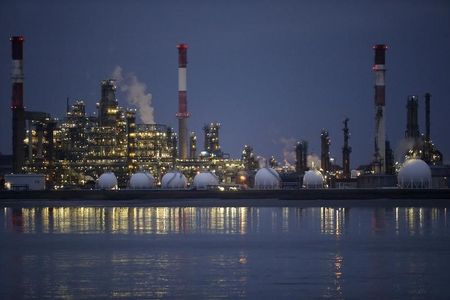Commodities
Oil prices rise, set for strong quarter amid bets on tighter supplies

Investing.com– Oil prices rose Thursday as bets on tighter supplies, especially amid lower Russian production, put crude on course for a strong first quarter in 2024.
At 09:15 ET (13:15 GMT), rose 1.4% to $82.48 a barrel, while rose 1.2% to $86.39 a barrel.
Crude prices saw two straight sessions of losses as an unexpected build in U.S. inventories and strong oil production in the country sparked some questions over just how tight markets will be in the coming months
Strength in the also weighed, as traders remained biased towards the greenback ahead of more cues on U.S. inflation and interest rate cuts.
Tight supply see oil prices set for strong Q1
However, both benchmarks are still set for strong gains in the first quarter of 2024, and were trading up between 12% and 15% over the past three months.
Prices were boosted chiefly by a tighter outlook for markets, as Russia, Saudi Arabia and other members of the Organization of Petroleum Exporting Countries kept ongoing production curbs in place. Russia had earlier in March said it will deepen its ongoing production cuts, while fuel supplies in the country also shrank following a series of debilitating attacks by Ukraine on Russian fuel refineries.
Few signs of a deescalation in the Israel-Hamas war, which has raised geopolitical tensions in the oil-rich Middle East region, also underpinned oil prices, as did persistent supply disruptions stemming from Houthi attacks on ships in the Red Sea.
OPEC meets next week
Investors will watch for cues from a meeting next week of the Joint Monitoring Ministerial Committee of producer group the Organisation of Petroleum Exporting Countries amid supply concerns over ongoing geopolitical risks.
That said, the group is unlikely to make any oil output policy changes until a full ministerial gathering in June.
Russia and Saudi Arabia, who lead the group known as OPEC+, extended their output cuts of 2.2 million barrels per day until the end of June.
(Ambar Warrick contributed to the article.)
Commodities
Oil prices rise; U.S. crude inventories plunge, Russia-Ukraine truce eyed
Commodities
India’s Reliance to stop buying Venezuelan oil over US tariffs, sources say
Commodities
Oil prices climb on Venezuela supply worries

 Forex3 years ago
Forex3 years agoForex Today: the dollar is gaining strength amid gloomy sentiment at the start of the Fed’s week

 Forex3 years ago
Forex3 years agoUnbiased review of Pocket Option broker

 Forex3 years ago
Forex3 years agoDollar to pound sterling exchange rate today: Pound plummeted to its lowest since 1985

 Forex3 years ago
Forex3 years agoHow is the Australian dollar doing today?

 Cryptocurrency3 years ago
Cryptocurrency3 years agoWhat happened in the crypto market – current events today

 World3 years ago
World3 years agoWhy are modern video games an art form?

 Commodities3 years ago
Commodities3 years agoCopper continues to fall in price on expectations of lower demand in China

 Economy3 years ago
Economy3 years agoCrude oil tankers double in price due to EU anti-Russian sanctions























